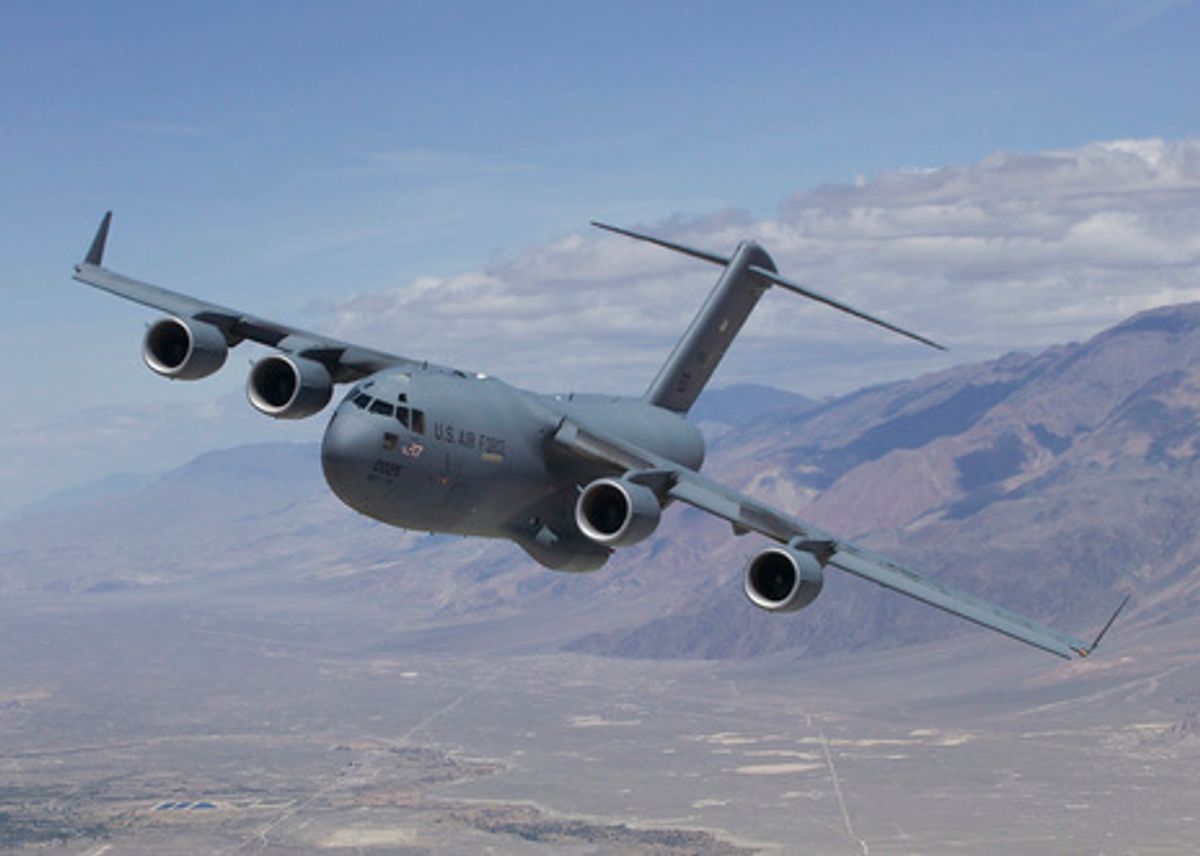With the F-22s and F-35s dominating military aviation news of late, one stalwart aircraft quietly celebrated a milestone birthday this month.
The Boeing C-17 Globemaster III military transport plane turned 20 on Sept. 15. In celebration, the first one built, the T-1, repeated its maiden 2-hour 1991 flight from California’s Long Beach Airport to Edwards Air Force Base in the Mojave Desert.
The C-17, originally developed by McDonnell Douglas Corp. before it merged with Boeing in 1997, was a game-changer, because it could carry greater payloads into smaller, more austere airfields than its predecessors, like the C-130.
The C-17’s feat of engineering was balancing transport strength and aerial flexibility. It’s 53 meters (174 feet) long with a nearly 52-m (170-foot) wingspan, and powered by four of the same engines used on commercial Boeing 757s—each with over 179 886 newtons (40 440 lbs) of thrust. It’s designed to carry 77 519 kg (170 900 lbs), airdrop 102 paratroopers and equipment, and last month, set an airdrop record with a 38 555-kg. (85 000-lb) test vehicle.
Today, seven countries operate 236 C-17s, 211 of which belong to the USAF. The aircraft have logged more than 2 million hours and 500 000 sorties, and delivered more than 4 million passengers and 3 million tons of cargo. The C-17 is used not only in battle support, but also to deliver humanitarian aid to and evacuate wounded from disaster-stricken areas.
Of the 46 different kinds of airplanes London flew in his career, he noted that the C-17 stood out for its size, maneuverability, and capability. Compared with commercial jets, C-17s ascend and descend at slightly sharper angles and use their engine exhaust to create additional lift. “It can take to any runway that’s 90 feet wide and 3000 feet long, which for an airplane of this size is unheard of,” London added. “Commercial airliners need a runway at least twice that length. I expect these planes to be around another 40 years.”







